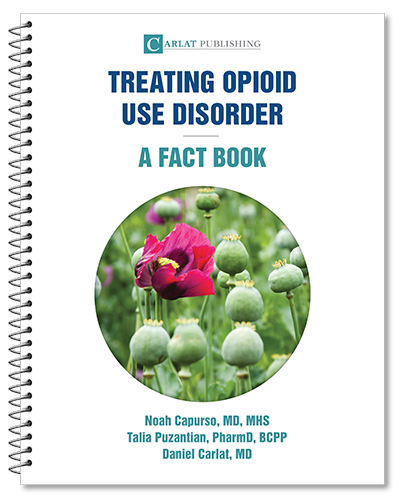Home » Buprenorphine Treatment to Be Expanded
Buprenorphine Treatment to Be Expanded
November 1, 2016
From The Carlat Addiction Treatment Report
Alison Knopf
Editor of Alcoholism & Drug Abuse Weekly and a freelance journalist specializing in mental health and substance use issues.
Ms. Knopf has disclosed that she has no relevant financial or other interests in any commercial companies pertaining to this educational activity.
Two recent federal initiatives have catapulted buprenorphine to the forefront of treatment for opioid use disorders. On July 6, 2016, the federal Department of Health and Human Services (HHS) published a final rule that raised the number of patients a single physician can treat from 100 to 275. Then, on July 22, President Obama signed the Comprehensive Addiction and Recovery Act (CARA), which adds midlevel providers—nurse practitioners (NP) and physician assistants (PA)—as buprenorphine prescribers. Other provisions of CARA increase the use of naloxone for opioid overdose rescue (see article in CATR, September/October 2016) and strengthen prescription drug monitoring program databases (see lead article in this issue).
The final rule expanding the cap was published in the Federal Register on July 8. It raises the total number of buprenorphine patients a waivered physician can treat from 30 in the first year and 100 in subsequent years to a total of 275. This is a big increase, but it isn’t automatic. Even if you are already a buprenorphine prescriber, increasing your “panel” to 275 patients isn’t just a matter of inviting more patients into your practice. You must first request and be granted the increase, and it’s only available to two classes of physicians: those who possess subspecialty board certification in addiction medicine or addiction psychiatry, and those who practice—without subspecialty certification—in a qualified practice setting as defined by the final rule.
Critics of federal policy on medication-assisted treatment have long objected that while NPs and PAs can prescribe opioids for other purposes with few limits, drug enforcement laws have prohibited them from prescribing controlled substances for addiction treatment. Expanding buprenorphine waivers to NPs and PAs will be welcome news for many, but some differences will remain between physicians and midlevels who prescribe buprenorphine. For example, to qualify for a waiver, physicians must complete an eight-hour training course through an organization approved by the Substance Abuse and Mental Health Services Administration. By contrast, CARA specifies that the waiver for NPs and PAs will require 24 hours of training. CARA gives HHS 18 months to work out the details of requirements for NPs and PAs.
More than 70 people a day die from opioid overdoses in the U.S., and both CARA and the new final rule were intended to help meet the demand for medication-assisted treatment. But so far, little funding has been provided to support these measures. For example, Congress authorized $181 million for CARA, but in the month of September, only $7 million was provided in a stopgap funding bill intended to keep the government going until December 9, 2016.
For more information on CARA, see this page.
For the buprenorphine cap final rule, see this page.
Addiction TreatmentThe final rule expanding the cap was published in the Federal Register on July 8. It raises the total number of buprenorphine patients a waivered physician can treat from 30 in the first year and 100 in subsequent years to a total of 275. This is a big increase, but it isn’t automatic. Even if you are already a buprenorphine prescriber, increasing your “panel” to 275 patients isn’t just a matter of inviting more patients into your practice. You must first request and be granted the increase, and it’s only available to two classes of physicians: those who possess subspecialty board certification in addiction medicine or addiction psychiatry, and those who practice—without subspecialty certification—in a qualified practice setting as defined by the final rule.
Critics of federal policy on medication-assisted treatment have long objected that while NPs and PAs can prescribe opioids for other purposes with few limits, drug enforcement laws have prohibited them from prescribing controlled substances for addiction treatment. Expanding buprenorphine waivers to NPs and PAs will be welcome news for many, but some differences will remain between physicians and midlevels who prescribe buprenorphine. For example, to qualify for a waiver, physicians must complete an eight-hour training course through an organization approved by the Substance Abuse and Mental Health Services Administration. By contrast, CARA specifies that the waiver for NPs and PAs will require 24 hours of training. CARA gives HHS 18 months to work out the details of requirements for NPs and PAs.
More than 70 people a day die from opioid overdoses in the U.S., and both CARA and the new final rule were intended to help meet the demand for medication-assisted treatment. But so far, little funding has been provided to support these measures. For example, Congress authorized $181 million for CARA, but in the month of September, only $7 million was provided in a stopgap funding bill intended to keep the government going until December 9, 2016.
For more information on CARA, see this page.
For the buprenorphine cap final rule, see this page.
KEYWORDS practice-tools-and-tips
Issue Date: November 1, 2016
Table Of Contents
Recommended
Newsletters
Please see our Terms and Conditions, Privacy Policy, Subscription Agreement, Use of Cookies, and Hardware/Software Requirements to view our website.
© 2025 Carlat Publishing, LLC and Affiliates, All Rights Reserved.


_-The-Breakthrough-Antipsychotic-That-Could-Change-Everything.jpg?1729528747)



